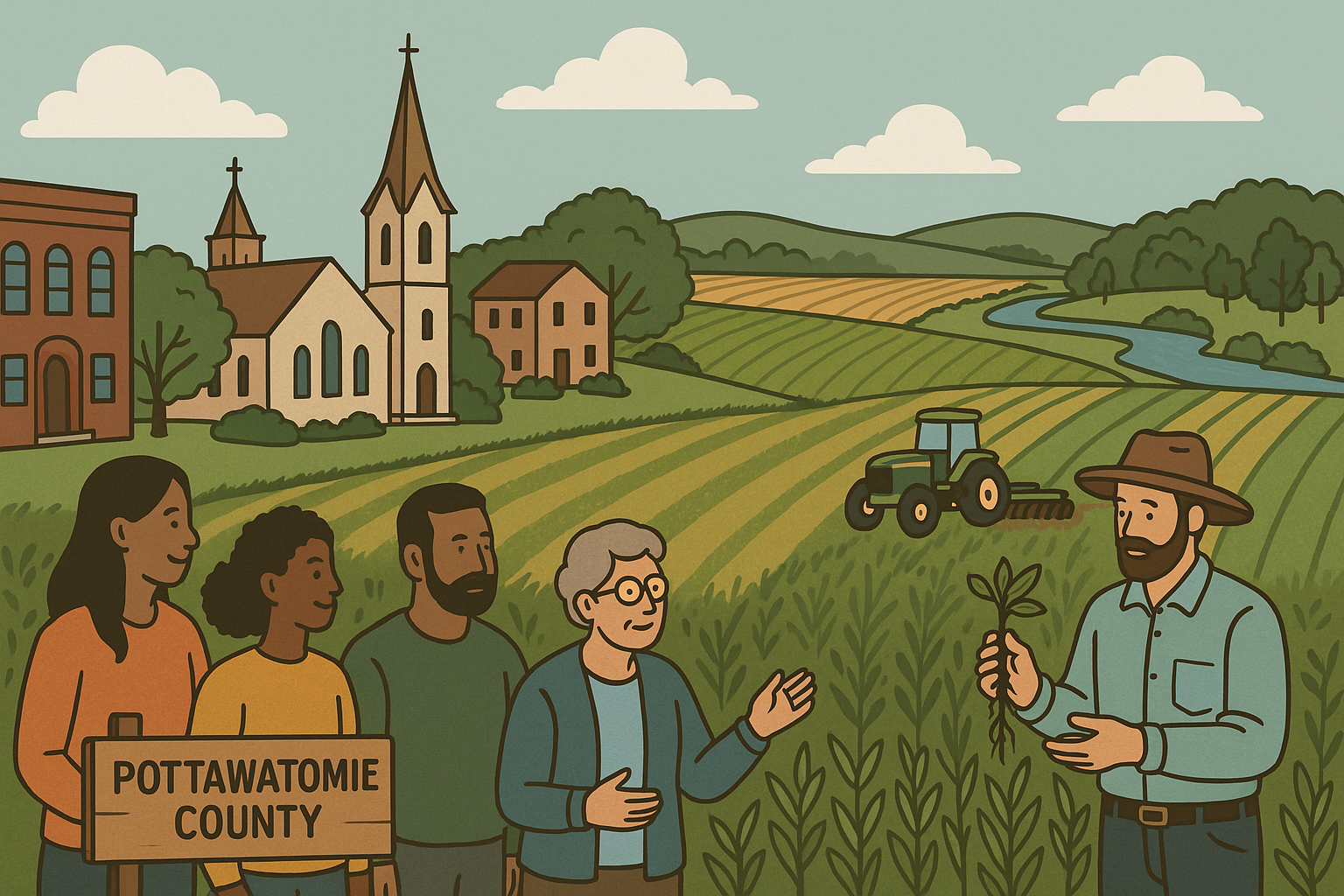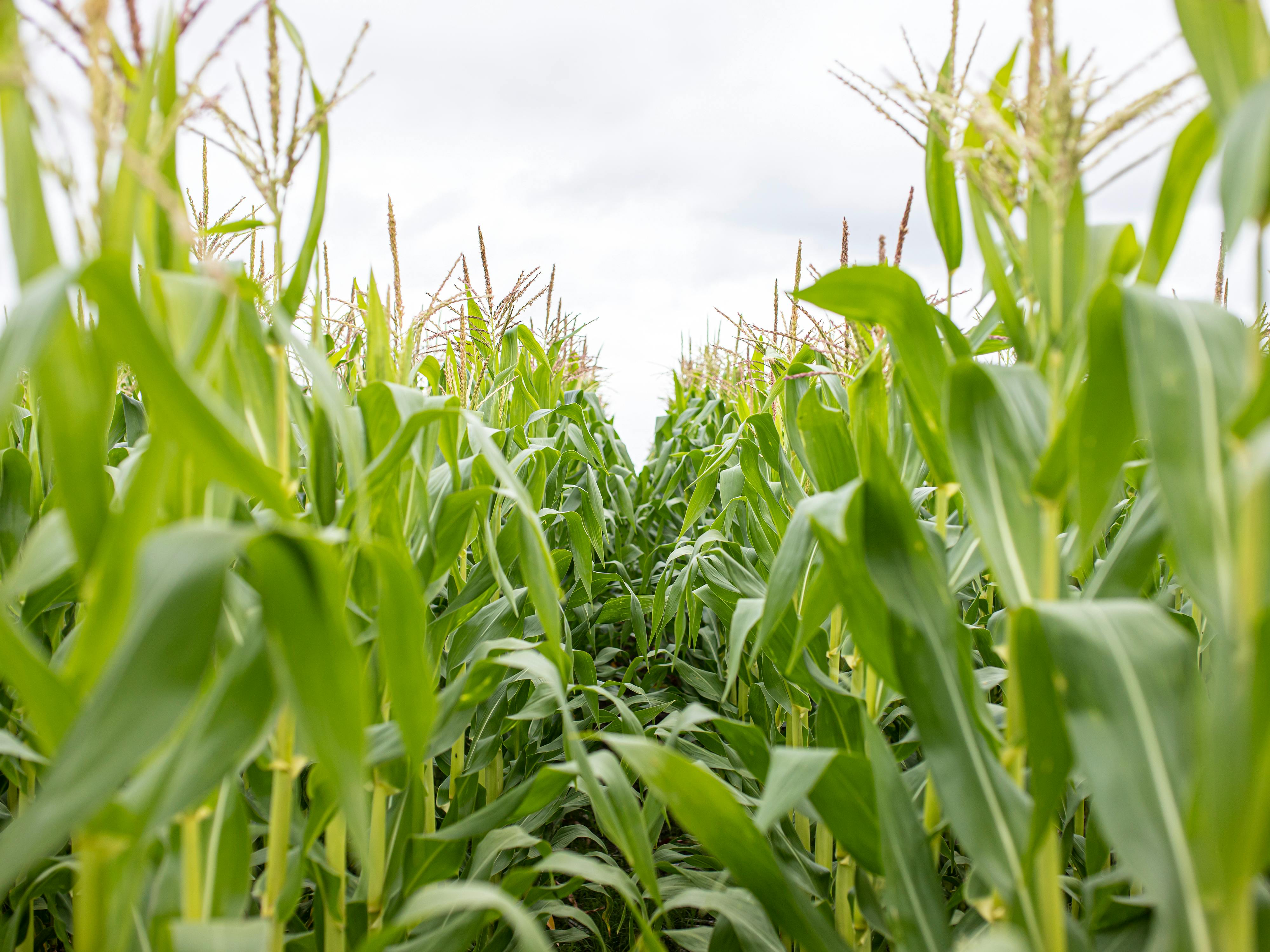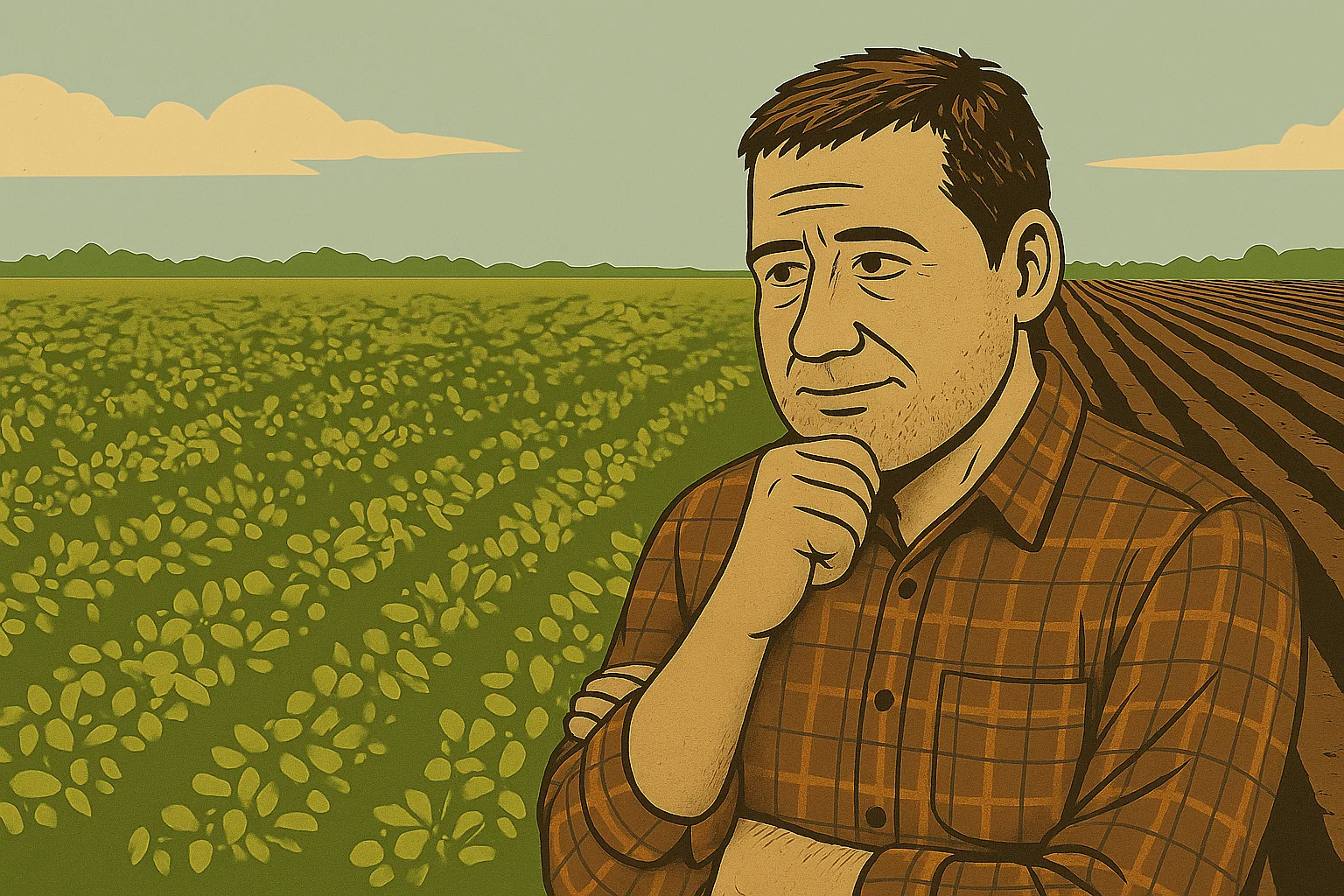Pottawatomie County (PT) is the fastest growing county in Kansas, featuring never-plowed Flint Hills prairie, Oregon trail ruts, and high-end cattle production. Population, income, and most wellbeing metrics have increased, especially in PT’s southern subdivisions bordering the Kansas river, where more than 80% of PT’s population is concentrated. Consulting the Community Capitals Framework in an alternative agricultural context (Flora et al. 2016), I analyzed four data types: (1) longitudinal and cross-sectional descriptives, which are (2) ranked against the other 859 U.S. Corn Soy Belt counties, and used to situate (3) a thematic analysis of 22 semi-structured interviews with farmers, ag-adjacent employees, and/or community leaders and (4) survey results for participating, interviewed farmers on conservation agriculture, cover crops, perennial groundcover, and wellbeing. The presentation includes data that are analyzed and presented in two papers currently under review in JAFSCD, as well as extraneous data; thus, this presentation is not peer-reviewed.
In the first paper, I primarily examined productivist farmers’ perceptions of the type and degree of symbiotic relationships between working agricultural lands, development, and population growth, within the context of PT’s shrinking agriculture of the middle. Perceptions largely depended on interviewees’ Human and Social Capitals, especially their positionality within farmer networks, identity, and/or occupation. Producers whose primary occupation was farming couched the social symbiotic relationship as more parasitic/competitive, whereas both producers whose primary occupations were not farming and community leaders perceived commensalism or mutualism. I discussed conclusions for other rapidly suburbanizing communities wanting to maintain mid-scale agriculture through farm transitions and property tax reform.
In the second paper, I use a critical IA political economy lens through which to view dynamics within and between Community Capital stocks related to (perennial) cover crop adoption. Even though perennial groundcovers were only used sparingly by one interviewed farmer, most of the rest expressed interest in learning more about them, and perhaps even incorporating them in the future. Since 2002, PT farmers have increasingly used annual cover crops, in part because harvested corn and soybean acres have increased over time, whereas herbaceous perennial crops such as prairie, pasture, hay(lage), and alfalfa have decreased. Over that period, PT farmers have increasingly preferred herbicides over minimum tillage for weed control and cover crop termination (spray > spade), and leaching emissions have increased. To remedy, PT farmers, ag-adjacent personnel, and community leaders could replace the fourth RA principle of “maintain living roots year-round” with “no synthetic chemicals.” The former can be considered an implicit principle and secondary effect of “keep the soil covered” (3rd principle), and its omission could encourage more minimum tillage practices when and where appropriate.
Funding:
RegenPGC is supported by the Agriculture and Food Research Initiative Competitive Grant no. 2021-68012-35923 from the USDA National Institute of Food and Agriculture. Any opinions, findings, conclusions, or recommendations expressed in this article are those of the authors and do not necessarily reflect the view of the U.S. Department of Agriculture.



